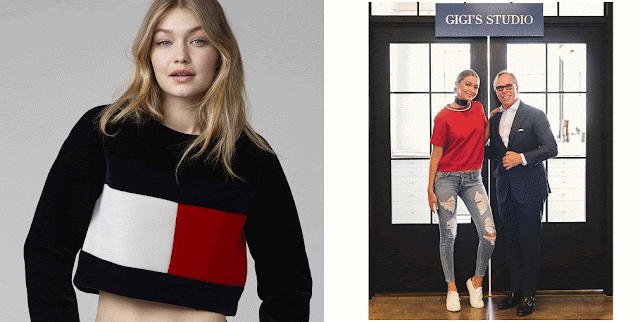 |
| Apparel Manufacturing in China |
US fashion companies are starting to look beyond China for sourcing apparel - China’s clothing
manufacturing capabilities are so advanced,
and still so relatively cheap for US fashion labels, that right now there are
few good substitutes for producing there. But as Chinese production costs begin
to creep up, American brands are scouting out other options, primarily in
Vietnam, India, Indonesia, and even the US itself...
Apparel Manufacturing Industry Profile - Companies in this industry
manufacture garments made from purchased fabric and from fabric they produce
themselves. Major companies include Hanesbrands, Levi Strauss, PVH, Ralph
Lauren, VF Corporation (all based in the US), along with Puma and Hugo Boss
(both based in Germany) and Youngor Group (China). Global revenue from apparel
manufacturing is about $480 billion, according to MarketLine. China, the
world's largest apparel manufacturer, accounts for about 40% of the world
export market. The European Union, Japan, and the US are the largest importers
of apparel, together accounting for more than 80% of imports...
 Carole Shashona Blue Purify Spirit and Style Meditation Candle
Artistry products: The business of beauty : a distributor workbook on skin care, cosmetics,
face sculpturing, color coordination, hair care, nail ...
Carole Shashona Blue Purify Spirit and Style Meditation Candle
Artistry products: The business of beauty : a distributor workbook on skin care, cosmetics,
face sculpturing, color coordination, hair care, nail ...
Clothing includes all the different garments, accessories, and ornaments worn by people throughout the world. An Eskimo may wear boots, warm trousers, and a heavy coat. An African in a village may wear only a piece of cloth tied around the waist. A nurse may wear a uniform and a special cap. A London banker may wear a business suit and a bowler hat. Each of these persons dresses differently, but they all feel a need to wear some kind of clothing. Like food and shelter, clothing is one of people's most important needs.
Throughout history, many people have worn clothing more for decoration than for covering the body. Even in cold climates, some people seem more interested in decorating their bodies than in protecting them. In the 1830's, for example, the famous British biologist Charles Darwin travelled to the islands of Tierra del Fuego, off the southern tip of South America. There he saw people who wore only a little paint and a small cloak made of animal skin, in spite of the cold rain and the sleet. Darwin gave the people scarlet cloth, which they took and wrapped around their necks. Even in the cold weather, these people wore clothing more for decoration than for protection.
No one knows exactly why or when people first wore clothes. But they probably began to wear clothing more than 100,000 years ago—and probably for much the same reasons we wear clothes today. Early people may have worn clothing to protect themselves, to improve their appearance, and to tell other people something about themselves. For example, a prehistoric hunter may have worn the skin of a bear or a reindeer in order to keep warm or as a sign of personal skill, bravery, and strength in hunting.
By the end of the Old Stone Age—about 25,000 years ago—people had invented the needle, which enabled them to sew skins together into clothing. They had also learned to make yam from the threadlike parts of some plants or from the fur or hair of some animals. In addition, they had learned to weave yarn into cloth. By this time, people had begun to grow plants that gave them a steady supply of materials for making yarn. They had also started to herd sheep and other animals that gave them wool.
These few advances took thousands of years. Most changes in the ways of making clothing and in the materials used for clothing have come only during the last few hundred years.
Until about 200 years ago, people had no machines for making clothes. Most families made their own clothing. Sometimes businesses paid groups of workers to make clothes, which the businesses then sold. But most of the people who made clothes worked at home. There were no clothing factories.
During the late 1700's and 180ffs, the invention of several machines brought the clothing industry out of the home and into the factory. Machines that could spin thread, weave cloth, and sew clothes led to the growth of the clothing industry. Today, people in most parts of the world can buy ready-to-wear garments made in large clothing factories.
The clothing industry is a giant business in many countries. It is one of the largest industries in the world. Clothes and clothing materials are important items of trade between nations. Shoppers in many lands buy Italian knitwear and shoes, Australian wool, and Japanese silk. Stores throughout the world sell clothes designed in London, Paris, and Milan. As a result, many people in different countries round the world—especially people who live in cities—wear similar clothes. But there are still differences in dress among most regions of the world.
People in various regions dress differently for many reasons. They may need protection from different kinds of weather. They may have different materials and methods for making clothes, or they may have different habits of dress.
This article discusses why people wear clothes, describes clothing around the world, and traces the history of clothing. Then it describes the clothing industry.
Most people, no matter where they live, wear some kind of clothing. Any person may wear certain clothing for a variety of individual reasons. But in general, people wear clothes for three main reasons: (1) protection, (2) communication, and (3) decoration. Most clothing serves all three purposes.
Protection. Clothing helps protect people's physical and emotional health.
Physical protection. People have probably worn clothing for physical protection since they first put on animal skins, leaves, or other clothing materials. In many areas of the world, people need clothing for protection from the weather. Clothing also protects people who work on dangerous jobs, take part in rough sports, or engage in other hazardous activities.
In cold climates, people wear warm garments made of wool, fur, or closely woven fabrics. They also wear warm shoes or boots.
In warm climates, people wear clothes made of such lightweight materials as cotton or linen, which have a fairly open weave. These materials absorb perspiration and allow air to flow around the body. People in these climates sometimes wear white or light-coloured clothes because such colours reflect the sun's rays. They may also wear sandals, which are more comfortable than shoes or heavy boots in warm weather. Large hats made of straw serve as sunshades.
In many places, people must wear clothes for protection against several kinds of weather. For example, people of the Arabian deserts wear loose, flowing garments that shield their bodies from the blazing sun during the day. The same garments protect them against the cold night air. Even in less severe climates, people may require protective clothing during the hot and cold seasons.
Certain activities require special protective clothing.
A soldier in combat wears a steel or plastic helmet and a nylon vest lined with plastic sheeting or fibreglass. Welders wear protective shields over their faces. Astronauts wear special suits and helmets for protection against changes of air pressure and temperature. Factory workers wear heavy shoes to protect their feet.
Some sports players wear padded equipment to guard against injury.
In some societies, people may wear clothing for protection against unusual types of physical harm. For example, people in France wore plain clothes during the French Revolution in the late 1700's. Revolutionaries might have thought that people wearing fancy clothes belonged to the upper class, and they would probably have killed them. In some countries, people believe that evil spirits can cause bodily harm. These people may wear special clothes that they think have magic power to protect them from such spirits.
Emotional protection. Clothing protects people's emotional health by helping satisfy some of their needs. For example, most people need to feel they are accepted as members of society or of some special group. Many people also want to feel they are independent individuals—different in at least some small way from everyone else.
People who want to belong to a certain group usually dress in a style similar to that of people in the group. Through their choice of clothes, they tell members of the group that they share their attitudes, beliefs, and way of life. People who want to show their independence may wear different styles of clothing from that worn by others. By wearing such clothes, they seem to say, "Look at me. I am someone special."
Communication. People communicate by means of the clothes they wear. Their clothes may tell others who they are, what they are like, how they feel, and what they would like to be.
Who people are. People can identify some famous individuals, such as a well-known politician or actor, without looking at their clothes. However, few individuals are so well known. In most cases, a glance at a person's clothes helps people identify the person.
Clothing may reveal such facts as a person's occupation, approximate age, and sex. Bus drivers, postal workers, nurses, police officers, and priests wear special clothing to help other people know what they do. People of different ages usually dress differently, and men and boys dress differently from women and girls. Some types of dress or uniforms show that a person belongs to a certain group. For example, Scouts and Girl Guides wear special uniforms.
What people are like. Clothes tell something about people's beliefs and feelings, their personality, and their general approach to life. Confident people often show more independence in choosing their style of dress than do people who are shy or unsure of themselves. The confident individual is likely to try new clothing styles. A shy person may seek security by following current styles. Others may be unconcerned about their dress and care little whether they dress in what others consider attractive clothing.
Some persons wear plain clothes because of strong beliefs about personal behaviour. They believe it is wrong to care about wearing clothes as decoration and that, instead, people should be concerned with other matters. Members of the Amish religious group in the USA and Canada have this kind of belief. Amish men wear plain, dark clothes, and Amish women wear long, plain dresses.
How people feel. Clothing often helps communicate the mood of a person. People who are sad or upset may show little concern for their appearance. Clothing with bright colours and bold designs may indicate happiness. Such clothing may even brighten the mood of others who see a person wearing it.
In many societies, clothing of certain colours has special meaning. For example, people in mourning may wear black clothes. But colours may have different meanings in various societies. A colour worn for weddings in one country may be worn for funerals in another land. Brides in many countries wear white gowns.
But people in India wear white clothes to mourn the dead.
What people want to be. People often wear clothes that they think make them appear a certain way. People may dress to hide their feelings or their age, or they may dress like people in some occupation. A person who feels sad may wear bright clothes to hide this mood from others. Many children enjoy wearing the clothes of their mother or father to "play grown-up." A person entering show business may imitate the dress of some entertainer whose success is established. When applying for jobs, many people wear clothes that they think make them look older or younger than their real age. They may also dress as they think people holding a certain job should look.
Decoration. Most people want to wear clothing that makes them feel attractive—even if its chief purpose is protection or communication. Such protective clothes as raincoats, snow boots, and sweaters come in bright colours and bold patterns. Some women wear expensive furs more for beauty than for warmth. Even military uniforms are designed to improve the appearance of servicemen and servicewomen.
Many people accept frequent changes in clothing styles because they want to appear attractive by wearing the latest fashions. A woman may stop wearing an old coat that is still in excellent condition. She does so because she feels it no longer makes her so attractive as does a new style of coat.
For thousands of years, people in different parts of the world have worn different types of clothes. Today, the Western style of clothing—common in Europe, Canada and the United States—has spread throughout the world. But the clothing worn by different peoples still varies widely, especially among people who do not live in cities.
Why clothing varies. There are four main reasons for worldwide variety in clothing: (1) differences in the purposes for wearing clothes, (2) differences in the materials available for making clothes, (3) differences in ways of making clothes, and (4) differences in clothing customs. These differences result in clothing variety from continent to continent, from country to country, and even from person to person.
Purpose. As we have seen, people wear clothes for three basic purposes—protection, communication, and decoration. But people in various regions of the world often need different kinds of protection, especially if they live in different climates. People may also wear clothes that have a special meaning not understood by people of other countries. For example, many Muslim women wear veils in public because their religion requires them to hide their faces from strangers. In addition, people have different ideas about what makes clothing attractive.
Available materials. People in different countries may have different materials available for making clothes. For example, the people of France can wear clothes made and from a much greater variety of materials than can the people of China. French stores sell garments made not only of such natural materials as cotton, fur, leather, silk, and wool, but also of such artificially made fibres as nylon and rayon. Most people in China must choose clothing made of cotton.
Ways of making clothes vary from country to country. Highly industrialized nations, such as Canada, Japan, the United States, and western European countries, use many kinds of machines and many processes to make clothes. For example, textile manufacturers in those countries can rapidly produce yards of cotton cloth woven many different ways. They can also dye and print the cloth and rapidly sew it into many different kinds of clothes.
People living in a village in India may have only hand-powered equipment for weaving cloth. They may create a variety of designs—maybe more than a machine can—but they need much more time than a machine to make the cloth. They would also have to sew clothes by hand.
Clothing customs affect styles. These customs develop in a country as generation after generation of children learns what clothes to wear. For example, a Mexican farmer and a Chinese farmer may wear clothes made from similar materials and by the same basic methods. They also may need their clothes for the same purpose. But the custom in Mexico is to wear straw hats with brims that tilt up. In China, custom calls for straw hats with brims that slant down.
For thousands of years, people have worn some kind of clothing. They probably made their first clothes from the fur of animals they killed. Gradually, they learned to use other materials. They also invented tools and machines to weave cloth and sew clothing.
This section of the article covers chiefly the history of clothing in the Middle East, Europe, and North America. The people of these regions have made the greatest contribution to the development of the Western style of dress. See the Indian, American, article to learn about the clothing of North and South American Indians. See the Africa and Asia articles for information about clothing worn on those continents. Also see such country articles as Argentina and Japan to learn about the clothing worn by the peoples of those countries.
Ancient times began more than 5,000 years ago and lasted until about the A.D. 400's. Most of our information about clothing worn in ancient times comes from vases, statues, and frescoes (wall paintings). A large amount of jewellery has survived from the period. Flowever, few woven fabrics or leather items have lasted through the years. Some garments from ancient times have been preserved under special conditions, such as the dry climate of Egypt.
The colours of most ancient paintings and statues have worn away through the centuries. For that reason, clothing shown on such items appears white or light coloured. Some ancient peoples—such as the Egyptians—actually wore white clothes. But many other peoples probably wore colourful garments. For example, frescoes uncovered during the 1700's at the site of the ancient Roman city of Pompeii show people wearing brightly coloured clothing.
The Egyptians used linen in making most of their clothes. Many slaves and children did not wear clothes, but high-ranking families wore them to indicate their status in society. The Egyptians wore garments made of rectangular pieces of fabric.
During the early years of the ancient Egyptian civilization, men wore a wide girdle, a nappyiike loincloth, or a short, wraparound skirt. Through the years, men began wearing longer skirts, and they often wore one skirt over another. Egyptian women at first wore sheathlike dresses. These tight-fitting garments had either one or two straps over the shoulders. Most of the dresses hung to the feet and left the breasts bare. The women often wore jewellery.
Later, both men and women often wore long, robelike garments instead of skirts and dresses. They made these robes by folding rectangular pieces of cloth in half lengthwise and cutting a hole on the fold for the head, people wore the robes draped in various ways. Sometimes they let the robes hang straight and full. Other times they tied the robes at the waist with a wide sash.
Egyptian men and women both wore wigs made of human hair, palm-leaf fibres, or wool. Many men shaved their heads, and so did some women. Men and women occasionally wore sandals, but most Egyptians went barefoot. See Egypt Ancient (Food, clothing, and shelter pictures).
The Sumerians, Babylonians, and Assyrians herded sheep and dressed in the wool their flocks provided. They lived in Mesopotamia, an area that extended through parts of what are now Iraq, Syria, and Turkey. The Sumerians lived in the southern part of this region. The Babylonians lived in the centre, and the Assyrians in the north.
The Sumerians wore either a smooth-fitting skirt with a fringe at the bottom or a skirt called a kaunakes. Some historians believe the kaunakes was made of cloth covered with rows of wool fringe. Others think it was made of shaggy sheepskin. Sumerian women wore a capelike garment in addition to the kaunakes. The Assyrians and Babylonians wore chiefly a large shawl or scarf wrapped around the waist and hips. They arranged this garment with one end draped over the left shoulder. The Assyrians and some Babylonians wore a short-sleeved tunic under the shawl.
The people of Mesopotamia usually had a fringe on the edges of their clothing. During the early years of this period, they wore various types of headdresses and generally went barefoot. Later in the period, these people wore sandals, shoes, and boots. Assyrian men had long, heavy, curled hair and black beards.
The Persians were among the first people to cut and garments, rather than simply drape themselves in pieces of fabric. Ancient Persia covered much of what is low Iran.
The Persians were hunters and horsemen. Historians believe they began to wear fitted animal skins because the fitted clothing was better suited to hunting and riding than were loose, flowing garments. Later, they made garments of woven cloth. Persian men wore trousers that were tightly fitted at the ankles. Shoes or boots were worn with the trousers. The men also wore tunics and coats with sleeves. Persian women wore garments similar to those of the men, but they also wore long veils. Persian garments set a pattern for the fitted type of clothing that later developed in western Europe.
The Hebrews left little information about their clothing. The Old Testament provides some description of early Hebrew garments, and some paintings and carvings from the years of Assyrian and Egyptian rule show Hebrew people. These sources indicate that the Hebrews dressed much like their Middle Eastern neighbours, who wore wraparound shawls and tunics. According to the Bible, the Hebrews sewed tassels on their clothing. The men wore locks of hair called delocks on the side of the head. For religious reasons, the Hebrews avoided wearing clothing made of a mixture of linen and wool.
The Cretans lived on Crete, an island about 130 kilometres south of Greece. They wore clothes unlike those of any other ancient people. Cretan women wore dresses that had the tight-waisted, corseted look of Western women s dress of the mid-1800rs. Skirts on the dresses were long and bell-shaped with layers of wide ruffles. The women's blouses had sleeves but left the breasts bare. The women used hair ornaments, necklaces, and other jewellery.
Cretan men wore short skirts that dipped at the front and back. The skirts were held at the waist by tight belts, some of which may have been metal. Men wore boots or sandals or went barefoot. Both men and women wore various types of headdresses.
The Greeks wore soft, flowing garments made of rectangular pieces of cloth. Men and women wore the same types of clothes. Common garments included the chiton, a straight, hanging garment fastened at the shoulders and tied at the waist, and the himation, a kind of large cloak. The chlamys was a shorter cloak for a man that left his fighting arm bare.
Greek jewellery included gold earrings, hair decorations, and brooches called fibulae for fastening garments at the shoulder. The people went barefoot at home and wore boots or sandals for hunting and travelling. Men wore a broad-brimmed hat called the petasos and a narrow-brimmed or brimless hat called the pilos. Greek women decorated their heads with a great variety of bands, caps, and scarves. See Greece, Ancient (pictures).
The Romans wore clothing based chiefly on that of the Greeks. The Greek chiton and himation became the Roman tunic and pallium for men and the stola and palla for women. The tunic varied in length but was short for soldiers. The stola hung to the floor. It was worn over a long tunic called the tunica talaris, a short shirtlike garment called the camisia, and a tight, corsetlike band of cloth called the strophium. The pallium and palla were outdoor garments that the Romans could use as blankets if necessary.
Roman citizens wore a carefully draped cloak called a toga. The toga hung over the left shoulder and was wrapped around under the right arm. Only people who were citizens of Rome could wear it. Slaves and exiled citizens were forbidden to wear the toga. Freed slaves were required to have special permission to wear it. See Toga.
Later in the Roman period, both men and women wore a type of wide-sleeved tunic called the dalmatica. Boys and girls wore a locket called the bulla as a good luck charm. Boys wore the bulla until manhood. Girls wore it until they married. Men wore sandals, shoes, and boots. Women usually wore sandals, though they also wore shoes.
The Romans developed an enormous trade in textiles. They imported woollens from Britain and Gaul (Gaul was the name of the land which now includes France, Belgium, and part of Germany), linen from Egypt, cottons from India, and silks from China and Persia. See Ancient Rome.
The Middle Ages began with the fall of the West Roman Empire in the late 400's and lasted until about the 1400's. During the Middle Ages, western Europe developed independently of what remained of the old Roman Empire, which was called the Byzantine, or East Roman, Empire.
The Byzantine Empire. The ruling classes of the empire wore highly decorated cloaks and tunics. These wealthy people used silk fabrics woven with threads of gold, and they decorated their clothes with pearls and precious stones. Poorer people wore plain tunics and blouses.
During early Byzantine times, the emperor and the men of his court wore a type of cloak called a paluda- mentum over their tunics. The empress also wore a paludamentum, and with it she wore a wide jewelled collar called a maniakis. Women of the court wore long stolas and pallas. In later Byzantine times, the emperor and empress wore a long, narrow scarf called a lorum instead of a paludamentum. Noblemen began to wear long, tight stockings called hosa.
Western Europe. The Celtic peoples of Britain and Gaul had adopted some ideas from Roman clothing during the time of the Roman Empire. During the Middle Ages, the styles of the Byzantine Empire gradually blended with those of western Europe. Through the years, Byzantine clothing increasingly influenced the style of dress in western Europe. Members of the ruling classes especially began to wear clothes that were fancier than the usual rough garments made of cloth, fur, and leather.
During the early Middle Ages, people made their clothes at home as they had done for hundreds of years. Families raised sheep and grew flax. They spun thread and wove it into fabric for their clothes. As towns grew, specialized shops gradually appeared, run by weavers, tailors, cobblers, and other craftworkers who made clothes. During the 1100's, these craftworkers began to organize simple labour unions called guilds (see Guild). The quality of cloth improved as the craftworkers developed greater skills. They began to cut, fit, and decorate clothes in more elaborate ways.
Men and women of the early Middle Ages wore simple tunics and circular or rectangular cloaks. Later, fitted clothes began to replace the loose, flowing cloaks and tunics. The woman's tunic developed into a long dress that was laced to closely fit the upper part of her body. Men wore loose breeches under their tunics. They also wore various kinds of tight leg coverings. For example, they might wrap their legs in long pieces of cloth or wear long stockings of bright colours.
During the 11 Offs and 120ffs, women wore metal hairnets, veils, and draped throat covers called wimples.
Men wore hoods that had long tails called liripipes.
Both men and women wore a type of outer tunic- adopted from the crusaders' garments—called a surcoat. Some surcoats were sleeveless and cut with low armholes. The woman's surcoat was long and worn over a long-sleeved gown. Men wore sleeveless surcoats of various lengths, from knee-length to ankie-length.
During the 1300s, clothes of the upper classes became increasingly elaborate, and accessories became popular. Dozens of buttons were used to trim men's outer garments. Many clothes had decorative edging called dagging. Men wore a close-fitting, low-waisted jacket called a cote-hardie with an expensive jewelled belt A long, tight-fitting gown worn by women had the same name. In the late 1300's, both men and women wore fancy garments called houppelandes. At first the man's houppelande was a long outer garment that hung to the floor. It was gradually shortened and became a jacket. The woman's houppelande was long and high- waisted with long, flaring sleeves.
In the later Middle Ages, the wealthy wore silks and other fine fabrics woven in Italy and Spain or brought to Europe from the East by traders. Lords and ladies of the courts trimmed their clothes with expensive ermine, marten, and sable fur. But most people wore linen and wool clothes. Their style of dress was much plainer than that of the ruling classes. The lesser nobility and the middle classes lined and trimmed their clothes with fox, otter, and rabbit fur. The common people wore garments made of the skins of goats, sheep, or wolves. See Middle Ages.
The Renaissance began in Italy about 1300 and spread throughout Europe during the 1400's and 1500's. Towns thrived during the Renaissance, and the number of merchants and craftworkers grew rapidly. The Byzantine Empire fell, and western Europe took the lead in clothing design. European dress of the 1400's shows the influence of ideas and attitudes that developed during the Renaissance.
Clothing was more decorative and complicated than ever before. Women wore many kinds of elaborate headdresses, including the high, cone-shaped hennin. The hennin—worn in many European countries during the late'1400's—rose to about 1 metre high and was draped with a veil. Jewellery and bright-coloured fabrics with large, flowered designs were popular.
Men wore longer stockings as jackets became shorter. The stockings became close-fitting trousers that resembled tights. Men wore many kinds of hats, including a draped turban called the chaperon. They also wore pointed-toe shoes called poulaines. On some shoes, the points measured 15 centimetres or more.
Men of the early 1500's wore many layers of outer garments, and their clothing was heavily padded. They put on linen shirts under tight-fitting upper garments called doublets. Over the doublet, they wore a jacket called a jerkin, which had a skirt that hung to between the waist and the knee. A knee-length gown with large sleeves came over the jerkin. Men also wore short, puffed breeches called upper stocks that were sewn to tight stockings called netherstocks.
Women's clothing was cut and sewn to fit tightly above the waist. During the first half of the 1500's, women wore dresses with low, square necklines and with skirts propped out stiffly over petticoats. Many skirts were split in front to show elaborate underskirts. Both men's and women's garments were often slashed so that the fabric of garments worn underneath could be pulled through in small puffs.
The stiff and formal fashions of the Spanish court influenced styles throughout Europe during the late 1500's. Men wore stockings and either padded breeches called trunkhose or slimmer knee breeches. Padding in the doublet developed into the peasecod belly fashion, which had a pointed bulge over the abdomen. The wide skirts of women's dresses were supported by a device called a farthingale. One type of farthingale was an underskirt with a rigid frame made of whalebone, wire, or wood. The frame made the skirt stand out stiffly away from the body. Another kind of farthingale was a long, thick pillow that women tied around the waist under a dress. Both men and women wore decorated starched collars called ruffs.
The 1600's. Elaborate, decorated clothing remained popular throughout most of Europe during the 1600's. Spain declined in importance, and France took the lead in setting clothing styles.
Men began to replace their doublets with waistcoats worn under knee-length coats. In the mid-1600's, loose, knee-length trousers took the place of tight, padded breeches. But knee breeches came back into style by the end of the century.
Except in Spain, women began to wear many petticoats instead of farthingales under their gowns. Women also started wearing three-quarter sleeves. This startling change bared female arms for the first time since the fall of the Roman Empire more than 1,000 years earlier. With the shorter sleeves, women wore muffs and longer gloves. By the late 1600s, they were wearing bustle gowns. A bustle was a cushion that made a skirt stick out at the back. Women also wore a type of high headdress called a fontange.
Men often wore high boots, and they carried a sword on a long sash that hung over the shoulder. They also wore fancy plumed hats over their long hair. Both men and women began to wear high-heeled shoes, many of which were trimmed with bows and buckles. Flat collars
made of lace and linen gradually replaced the stiff ruff.
A scarflike neckcloth, in turn, succeeded the flat collar in the late 1600's. Men began wearing huge, curled wigs called periwigs by about 1660.
The Puritans in England and the Puritan colonists who settled in America preferred plainer versions of the clothing of the day. The women wore plain, dark- coloured dresses and simple white caps. The men cut their hair short and wore high, stiff hats. They dressed in dark-coloured breeches, doublets, and jerkins. Both men and women wore white collars.
The 1700's brought many changes in the manufacture of cloth. About 1764, James Hargreaves, an English weaver, invented the spinning jenny, a machine that spun a number of threads at the same time. Then, between 1774 and 1779, an English weaver named Samuel Crompton developed the spinning mule. This machine produced as much thread as could 200 persons spinning by hand. In the mid-1780's, Edmund Cartwright, an English clergyman, developed a steam-powered loom. With such machines as these, English weavers produced large quantities of cloth at prices lower than those charged by guild craftworkers, who wove by hand. Large factories took over the production of cloth, and many people stopped making cloth at home. See Industrial Revolution.
Clothing styles changed rapidly. But only the nobility and the wealthy could afford the new fashions. Most people still wore comfortable, long-lasting woollen clothing. Many continued to make their own fabrics and clothes.
French fashions set the clothing standards in Europe during most of the century. But late in the 1700's, the French Revolution interrupted France's fashion leadership, and England took the lead. After the revolution, France regained leadership in the design of women's clothes, but English tailoring continued to influence men's fashions. Clothing styles in England and France influenced those in the United States. Many Parisian designers distributed dolls dressed in fashions to be copied in England, America, and other parts of the world.
Both men and women wore elaborate hairstyles. Men covered their heads with large powdered wigs of various shapes. By the 1770's, women wore their hair in high, carefully arranged styles called pompadours. They made their hair stiff with grease and powder and decorated it with feathers, jewels, and ribbons. They also added hairpieces to their own hair and wore wigs. Sometimes women did not comb out or re-dress their hair for several weeks because the styles were so complicated.
Women wore tight corsets and great round skirts held out by a hoop. During the 1780s, a bustle replaced the hoop. The style included very large fancy hats. Men wore variations of the coats, waistcoats, and breeches introduced during the late 1600's.
The outbreak of the French Revolution in 1789 brought great changes in clothing style in France and throughout the rest of Europe as well. Men started to wear much plainer clothes, with less colour and ornamentation. They adopted top hats and hats called bicornes. Bicornes had brims folded up to form two points. These hats replaced the tricorne. The tricorne, which had the brim folded to make three points, had been popular for most of the 1700's. Women began wearing clothing that imitated the styles of ancient Greece. This clothing included sandals and lightweight cotton dresses. Women cut their hair short and curled it, and they wore wide-brimmed bonnets. Dresses had low necklines and high waistlines with drawstrings. This dress style became known first as Directoire and then, in the early 1800's, as Empire.
The 1800's. Much production of clothing by hand ended during the 1800's, and the clothing industry became firmly established in Europe and the United States.
Two Americans—the inventor Elias Howe and a machinist named Isaac Singer—developed improved sewing machines in the mid-1800's. These machines and other inventions made the manufacture of cloth and clothing easier. Manufacturers began to make inexpensive, ready-to-wear clothes. Production methods used by manufacturers gradually improved. But many people still preferred to have their clothes made by a tailor or dressmaker if they could afford it. Others continued to wear homemade garments.
The Empire style lasted until the 1820s. Tight-waisted, full-skirted gowns became popular during the 1830's and 1840s, and women wore many petticoats under them. By the 1850's, women wore stiff wire or whalebone petticoats called crinolines to support their skirts. Earlier types of crinolines were underskirts made partly J of horsehair.
By the 1870s, full-skirted dresses gave way to bustle j gowns. In the 1880's, a European designer introduced the first suits for women. A type of blouse called a shirt-waist-worn with a separate skirt—became fashionable in the Gay Nineties. Women wore costumes that were designed in an "hourglass" style. This style required a woman to lace in her waist tightly to make it as small as j possible.
In the 1800s, men's clothes continued to become plainer. By about 1815, fashionable men in Europe and i the United States were wearing trousers instead of knee J breeches, which had been the style for more than 200 years. For general wear in the early part of the century, men wore the long tail coat. Later, the knee-length, full- skirted frock coat replaced the tail coat. Then the plain sack coat, which is still worn today, replaced the frock coat. Men kept the tail coat for formal wear only. A coat called a dinner jacket, also worn for formal occasions, was introduced in the late 1800s. Men also wore caps, round bowler hats, high top hats, and straw hats.
Knickerbockers, which resembled the old knee breeches, became popular for sports after 1870.
The 1900's. From 1890 to 1920, improved manufacturing methods brought rapid growth to companies that made ready-to-wear clothing. Both men and women began to wear clothing that was mostly mass-produced in factories (see Mass production). As a result of mass production, women's fashions could change more rapidly than ever before. But men's clothing styles changed little until the 1960s.
In the 1900s, women began to wear looser, lighter-weight clothing. The changing styles—especially in leisure and sports clothes—gradually uncovered different parts of women's bodies. Legs were bared in the 1920s, abdomens in the 1940s, and thighs in the 1960's. Today, women wear less clothing than in any other period since ancient times.
For a few years around 1910, women wore hobble skirts. These skirts were so tight at the bottom that a woman could hardly walk. Clothing became simpler and less formal during World War I (1914-1918). In the 1920s, women adopted the "boyish" look. Dresses were straight and unfitted, and they ended at, or a little above, the knee. In the 1930s, some women began wearing slacks (trousers). Skirts became longer during the 193ffs and then shorter during the early 1940s. During World War
(1939-1945), women wore many tailored styles with padded shoulders. Slacks—worn by women working in war industries—also became popular.
Women's fashions changed greatly after World War II. Crinolines and long, full skirts returned. Nylon garments, including stockings and lingerie (underwear), became available in large quantities. During the 1950s, straight, tight-fitting sheath dresses and shorter hemlines gained popularity. A-line dresses and loose-fitting shifts came into style during the early 1960s. The very short miniskirt quickly spread to other countries after it first appeared in England during the mid-1960s.
From 1900 to 1950, both single-breasted and double- breasted men's suits were popular. Shoulders were natural (unpadded) in about 1910 but gradually became more padded. During the 1950s, many men switched to single-breasted suits, which had narrow lapels and natural shoulders. They also began wearing coloured shirts with business suits.
Both men and women developed great fondness for sportswear and wash-and-wear fabrics during the 1950's and 1960s. Leisure and sports clothes for women included knee-length Bermuda shorts, tapered slacks, and ski and stretch pants. Men wore Bermuda shorts, slacks, and colourful sports shirts. Improvements in sewing machines and in dress patterns brought an increased interest in sewing.
In the 1960s, many young men started to wear colourful fashions, many of which included fancy jewellery. They also grew beards and moustaches. During the early 1970s, men of all ages joined in the change to colourful clothes. They began wearing checked or striped shirts in a variety of colours with business suits. They also wore wide ties in fancy prints, stripes, or bright swirling colours. Men of all ages began growing beards and moustaches. They also began wearing their hair longer than in the 1960s. Women's fashions included skirts of every length—from the miniskirt to the maxiskirt, which fell to the ankle. Many people seemed to have an "anything goes" feeling toward clothing styles.
During the 1980s, fashions "softened." In the early 1980s, men wore suits with padded shoulders but a loose fit. By the late 1980's, suits had natural shoulders and were less formal. Women's fashions included many options. Women wore trousers, skirts of every length, and casualwear that combined sweaters, jackets, skirts, and dresses. Tight-fitting exercise wear was popular, but so too was oversized, baggy clothing.
The clothing industry is one of the largest industries in the world. It includes the manufacture of women's, children's, and infants' clothes and men's and boys' wear. The industry also produces furs, including "fake furs"; embroidery; hats, jewellery, shoes, and other accessories; buttons, hooks and eyes, zips, and thread; underwear and nightwear; and sportswear.
The main clothing centres of the world are London, New York City, Paris, and Milan. The United States is the world's leading manufacturer of clothing. There are about 24,000 U.S. clothing manufacturers, and they employ about 1,400,000 people. About 10,500 of these companies make women's clothes. Most clothing manufacturers have small factories. These firms employ an average of fewer than 100 people, though some have as many as 1,000 workers.
Clothing materials include many natural and artificially created substances. People have used some materials, such as animal furs, for clothes for thousands of years. Other materials, including plastic sheeting and artificially created fibres, came into practical use during the 1900's.
Natural materials include fur, leather, and cloth that is made of plant or animal fibres.
Fur and leather provide many of the warmest and longest-wearing clothes. They are also used in some of the most expensive, fragile, and luxurious garments. Fur comes only from warm-blooded animals. Leather is obtained from either warm-blooded or cold-blooded animals.
Fur is used mostly for coats and coat linings. Such furs as mouton, a fur made of sheepskin, make warm coats that wear well. Chinchilla fur is soft, fragile, and not so warm as other furs. Most furs are dyed, plucked, sheared, or treated in some other way before being made into clothes. See Fur.
Most leather is used to make shoes. Such items as gloves and handbags—and some jackets, trousers, skirts, and suits—are also made of leather. Tanners manufacture leather by treating hides to make them soft and flexible and to prevent them from rotting. Most leather that is used for clothing is made from cowhide. See Leather.
Cotton, flax, silk, and wool are the natural fibres most widely used in clothing. They are long and flexible and can easily be made into thread. Cloth made from each of these fibres has a special quality that makes it popular. Silk has great lustre and softness, for example, and wool provides warmth.
Threads of cotton, flax, silk, and wool fibres are usually knitted or woven into fabric (see Knitting; Weaving). Such methods as braiding and lace making are occasionally used to make clothing materials. Wool can be made into felt by pressing and rubbing together warm, damp wool fibres. Other kinds of fibres do not stick together when pressed unless they have been treated with an adhesive substance.
Cotton fibres come from the boll (seed pod) of the cotton plant. Fibres from the stem of the flax plant are woven into linen. Silk, the strongest of all natural fibres, comes from cocoons spun by silkworms. Sheep provide most of the wool that people use, though such animals as the alpaca and various breeds of goats also furnish wool. See Cotton; Linen; Silk; Wool.
Manufactured materials include paper, plastic sheeting, rubber, and artificially produced fibres. Clothing manufacturers are using more of these materials because they have certain advantages over natural ones. For example, many are stronger, more shrink-resistant, or less expensive than natural fibres.
In 1884, a French chemist and inventor named Hilaire Chardonnet patented the first successful artificial fibre. He called it artificial silk. Chardonnet's fibre was first manufactured in the United States in 1910. It was named rayon in 1924. Since then, scientists have developed many other artificial fibres, sometimes called synthetics. Chemists develop them from natural substances or by combining two or more chemical compounds. Other synthetics include nylon and polyester.
Today, many widely used fabrics are blends of natural and synthetic fibres. For example, such fabrics could be a mixture of cotton and polyester or wool and nylon. These fabrics have the characteristics of each fibre used in the blend. A fabric made of wool and nylon is warm because of the wool and is shrink-resistant because of the nylon content. See Synthetics and its list of Related articles.
Paper, plastic sheeting, and rubber have been used less in clothes than have synthetic fibres, but their use is increasing. Some paperlike fabrics are made of fibres held together by adhesive substances. Others are made by combining synthetic fibres with natural fibres or rayon. The synthetics melt when heated and hold the network of fibres together as a fabric. Such fabrics are widely used in making disposable nappies, which are thrown away after being soiled once. Paperlike fabrics are also used for other disposable garments, including bibs, underwear, and rainwear. Manufacturers use plastic sheeting in making such products as handbags, raincoats, and shoes. Rubber is used chiefly to make such flexible, long-lasting, waterproof clothing as boots and gloves.
Ready-to-wear clothes. Most clothes worn today are ready-to-wear garments. Mass production of clothing saves customers both the time it would take to make clothes themselves and the money they would spend on clothes made by a dressmaker or tailor.
Designing is the first step in the manufacture of ready-to-wear clothing. Fashion designers in London, New York City, Paris, and Milan create most clothing styles. They work under great pressure to produce designs—especially of women's fashions—that people will want to buy.
Many large clothing manufacturers employ their own designers. These experts create styles in addition to those that come from Paris and the other fashion centres. Manufacturers try to sell the designs to buyers from clothing stores. Most smaller clothing manufacturers purchase designs from independent designers, as do firms that produce garments which change little in fashion.
After a designer has an idea for a style, he or she chooses the colours and types of fabrics in which to make the garment. The designer then makes samples of the garments, and buyers from stores come to see them. If the buyers see a style they think will be popular, they order garments of that design.
The final test for any style comes when the clothes appear in stores. If enough people buy a particular style, stores will reorder it from the manufacturer. If customers ignore a style, it soon disappears—and another style takes its place.
Manufacturing and selling. After receiving orders from stores for a certain design, the manufacturer cuts patterns of the garment in various sizes. Ready-to-wear clothes come in standard sizes for different ages and figure types.
Clothing manufacturers buy fabrics in large rolls called bolts. Expert examiners unroll the bolts of material and inspect them for rips or other flaws. Spreaders pile the bolts on large tables. Workers called markers outline each pattern in chalk on the material. In some companies, the markers transfer pattern markings to a large piece of paper that serves as a guide for cutting the material.
Next, workers called cutters use electric cutting machines or hand cutting tools to cut out the various parts of the garments. Then sorters, who also are called assemblers or bundlers, number the pieces of material. These employees put all the pieces needed to make one garment in a bundle, along with the necessary buttons and trimmings. The bundles are then sent to the sewing room.
Most sewers handle only one or two parts of a garment. For example, one sewer may stitch only the shoulder seams and hems. Another sewer may make pockets and collars. On some elaborate, expensive coats, dresses, or suits, one person may do all or most of the sewing by hand. Finishers do all the outside stitching, such as making buttonholes. Pressers iron the garments once they are completed.
Some clothing companies handle all the steps in the manufacture and distribution of their products. Others send their cut garments to clothing contractors, who sew them together and return them to the manufacturer. Sometimes clothing jobbers buy cut garments and complete the manufacturing and distribution process. Manufacturers sell most garments directly to retail stores. They may also sell to wholesale dealers, who in turn sell to retailers.
Protecting the public. In many countries, laws protect the public in the purchase of clothing. For example, these laws generally require clothing manufacturers, wholesalers, and retailers to cooperate with textile manufacturers in placing accurate labels on all garments offered for sale.
Labels on wool fabrics are generally required to contain information about the kind and amount of wool used. In addition, a manufacturer might be required to state on the label if a new product is made from wool that is reused (when wool fibre from a garment that has been worn is shredded up and made into yarn or fabric), or reprocessed (when the wool has been made into a fabric before but not used in a garment that was actually worn). Labels on garments made from fibres other than wool are generally required to show fibre content by percentage. Labels on fur products may identify the type of animal fur and tell if it has been bleached or dyed. Other laws prohibit the sale of fabrics that burn easily.
Working in the clothing industry. The clothing industry provides work for engineers, artists, designers, illustrators, writers, teachers, salespeople, and many others.
Fashion designers hold important positions in the clothing industry. The sale of a garment depends largely on the popularity of its design. In turn, the jobs of many people and the profits of many companies depend on the work of designers. People who wish to become fashion designers may take fashion-designing courses in college or attend special design schools.
A successful fashion designer may have special personal qualifications or talents. In addition, most designers know how to drape and sketch new styles, draw and cut patterns, and sew garments. Many designers start their careers as assistants in design departments, as sample makers, or as artists in pattern houses. In time, some designers establish their own firms or form partnerships with other designers.
Fashion coordinators perform a variety of jobs. For example, they may plan an entire fashion show or select the shoes that a model wears for an advertisement.
Most large department stores employ fashion coordinators who select merchandise, plan displays, and promote sales. For such work, a person must have a thorough knowledge of current fashion trends.
Fashion writers and artists specialize in describing or illustrating clothes for advertisements and articles in magazines and newspapers and for direct-mail advertisements. They may work for advertising agencies, department stores, manufacturers, publications, or wholesalers. Experts called copywriters prepare the written material for clothing advertisements. They must have a talent for writing and a knowledge of clothing design.
Fashion editors decide what current fashions will appear in their publications. They may travel to Paris or other fashion centres to attend fashion shows. These editors must know what types of displays will catch a reader's attention, and they should be able to forecast trends.
Fashion illustrators need some knowledge of clothing construction in addition to a talent for drawing. Fashion photographers must know how to work with fashion models and arrange merchandise attractively as well as how to use camera equipment.
Garment manufacturing. Men and women who are interested in making clothes may become cutters, dressmakers, finishers, sewing-machine operators, or tailors. They must be able to work quickly and skilfully with their hands. Most garment makers start in training positions under experienced workers. People with training in business management or industrial engineering may find opportunities in garment-manufacturing plants as production managers or plant engineers.
Merchandising. Qualified people may find positions with stores as buyers, department heads, or salespeople. Many men and women open their own small retail clothing shops.
A number of colleges and business schools offer specialized management courses that provide training for merchandising positions. Most large department stores offer management-training programmes to college graduates and occasionally to experienced members of their staffs.
Teaching. Men and women with enough college training may qualify to teach school or college courses related to clothing. Teaching specialities include clothing design, the history of clothing, the merchandising of clothes, and the importance of clothing in society.
Related articles. See the section of the many country articles in which clothing is discussed, such as Japan (way of life). See also the following articles:
Articles of clothing: Fez, Clove, Handkerchie, Hat, Hat, Helmet, Moccasin, Necktie, Shoe, Stockings and Turban
Clothes making and care: Dry cleaning, Dye, Fashion, Knitting, Sewing, Spinning, Textile, and Weaving.
Clothing materials: Acrylic, Broadcloth, Brocade, Calico, Camel’s-hair cloth, Cambric, Canvas, Cashmere, Chenille, Corduroy, Cotton, Damask, Denim, Felt, Flannel, Fur, Gabardine, Gingham, Jersey, Leather, Jersey, Khaki, Lace, Linen, Mohair, Muslin, Net, Nylon, Percale, Polyester, Rayon, Satin, Serge, Silk, Swiss, Synthetics, Taffeta, Tweed, Velvet, Voile, Wool, and Worsted.
Clothing in history: Colonial life in America. Egypt, Ancient (Food, clothing, and shelter; pictures), Gauntlet, Greece, Ancient (Food, and shelter; pictures), Indian, American (Clothing; pictures), Pioneer life in Australia and New Zealand, Renaissance (pictures), Roaring Twenties (pictures), Ancient Rome (Food, clothing, and shelter; pictures), Toga, and Tunic.
Other related article: Batik, Button, Climate (Clothing and Climate), Easter (Wearing new clothes), Embroidery, Fibre, Fire brigade, Flax, Hairdressing, Jewellery, Modelling, Needle, Pin, Sewing, Sewing machine, Levi Strauss, Tartan, Thread, Twill, and Zip.
Outline:
(1) Why people wear clothes: Protection, Communication, and Decoration
(2) Clothing around the world: Why clothing varies? And Traditional costumes
(3) Clothing through the ages
(4) The clothing industry: Clothing materials, Ready-to-wear clothes, Protecting the public, and Working in the clothing industry
Questions
What are the three main reasons for wearing clothes?
What improvements did the spinning jenny And the spinning
mule bring to the manufacture of cloth?
What advantages do synthetic fibres have over natural ones? When did people learn to make yarn and cloth?
How do customs influence clothing styles?
What cities rank as the world's chief clothing centres?
Who were among the first peoples to wear fitted clothes?
Why does clothing vary in different parts of the world?




























